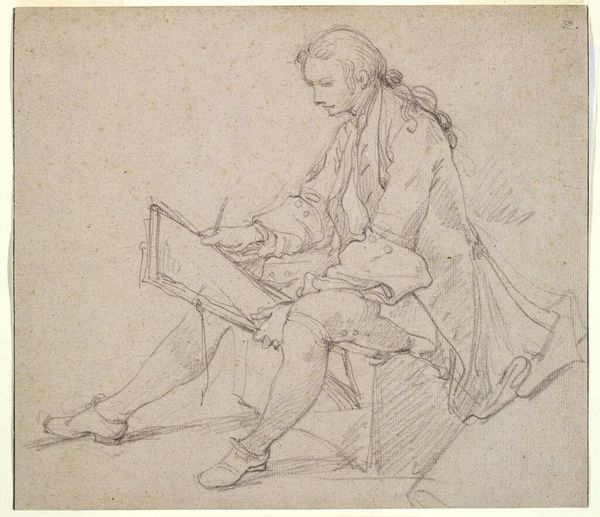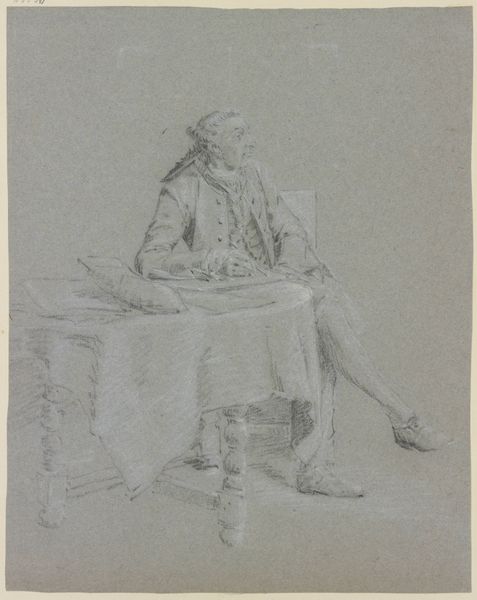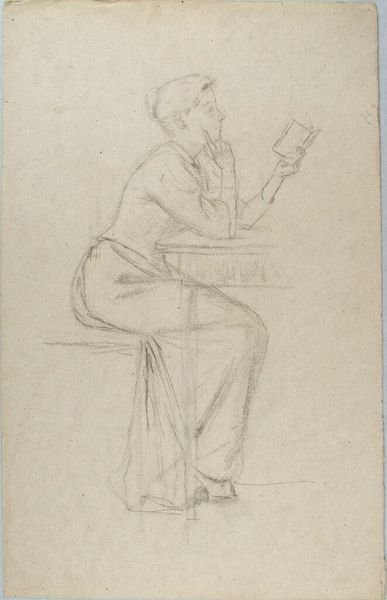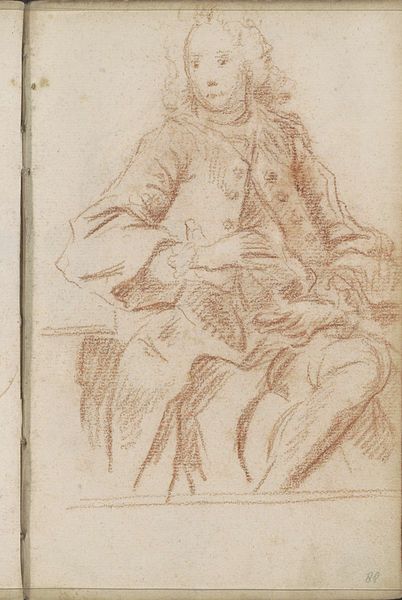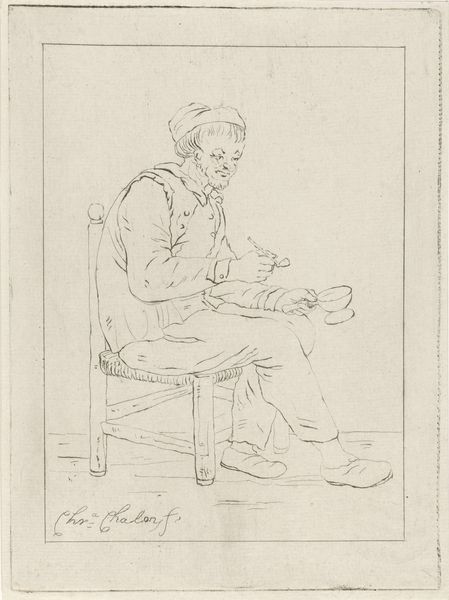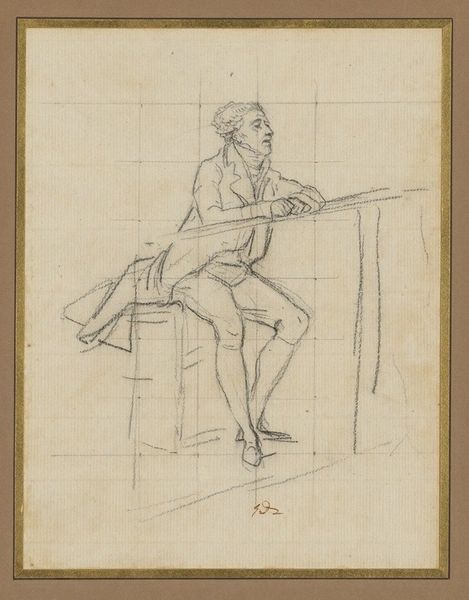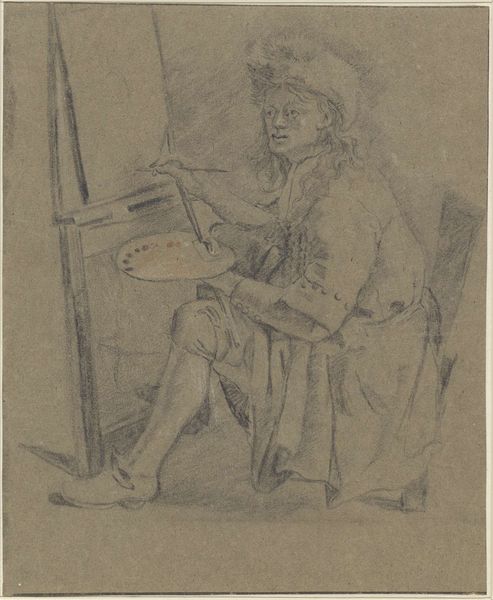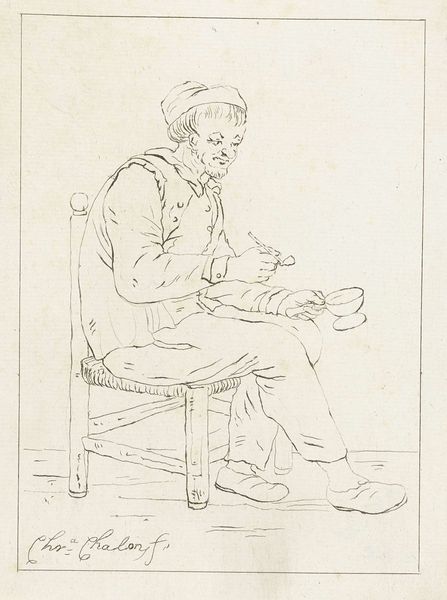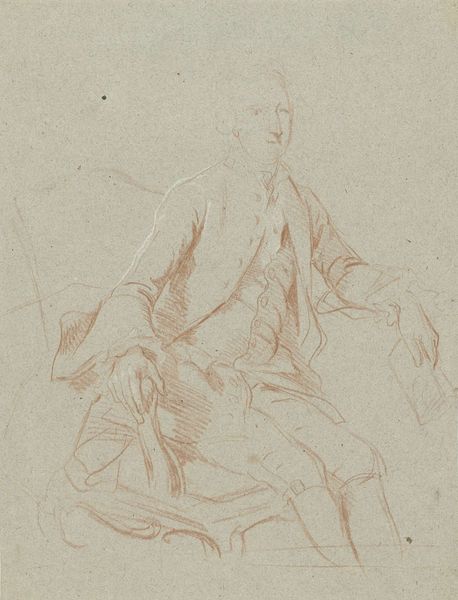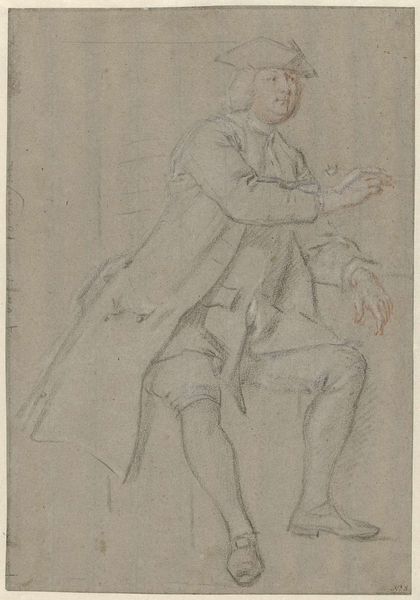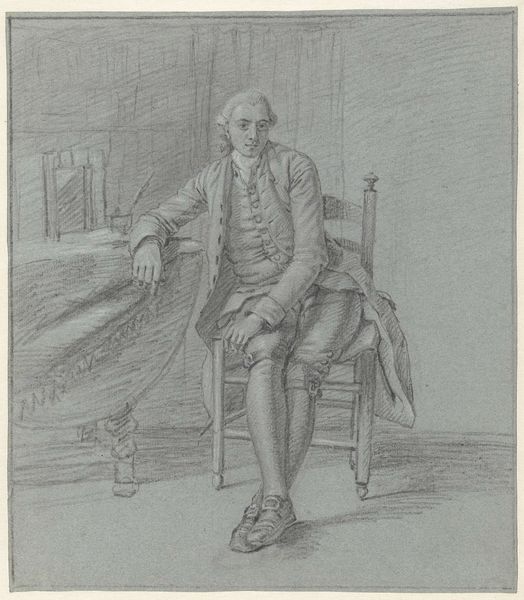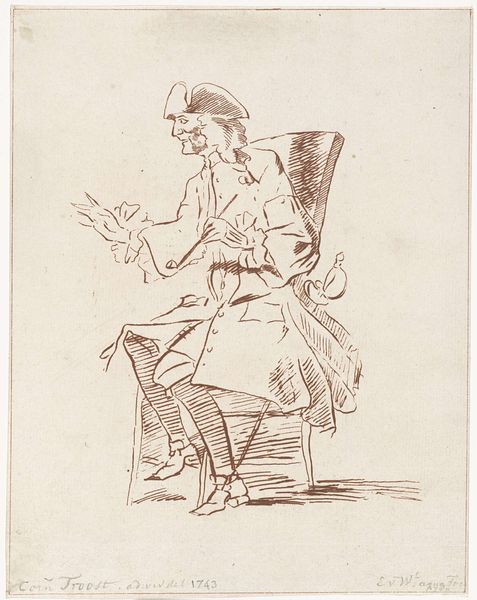
Figuurstudie voor de leraar in een afbeelding van een tekenacademie 1710 - 1777
0:00
0:00
drawing, paper, pencil
#
portrait
#
drawing
#
baroque
#
figuration
#
paper
#
pencil
#
history-painting
#
academic-art
Dimensions: height 355 mm, width 245 mm
Copyright: Rijks Museum: Open Domain
Curator: We're looking at "Figuurstudie voor de leraar in een afbeelding van een tekenacademie," or, "Figure Study for the Teacher in a Painting of a Drawing Academy." It’s attributed to Charles-Joseph Natoire, likely created sometime between 1710 and 1777, crafted with pencil on paper. Editor: Oh, what a delicate sketch! There’s a feeling of stillness, but also intent focus in the figure. He looks like he’s in deep thought, perhaps ready to impart some grand wisdom to his students. The light pencil lines give it an airy, almost ephemeral quality. Curator: It's a preparatory drawing. Knowing Natoire was a prominent history painter gives context—these types of sketches were crucial to the academic process. We see the raw labor involved in the careful construction of idealized form that upholds established traditions. It highlights the role of drawing as foundational, both literally and conceptually. Editor: I'm intrigued by the way Natoire uses these light lines to suggest volumes. The clothing almost drapes off the body, but the details on the legs—the stockings and shoes—those are rendered more deliberately. It’s almost like he is playing with focus. There's a quiet dignity here, yet there's a spontaneity in his quick, assured strokes. It makes me want to pick up a pencil and sketch something myself! Curator: Think about the economics, though. Paper, pencils—these weren't inexpensive materials, signifying access and privilege inherent within artistic training during the Baroque period. The artwork itself functions as evidence of artistic training within a very controlled academic environment, reinforcing social structures as much as developing talent. Editor: That’s a fascinating counterpoint. I tend to get swept up in the image itself, but you bring up such critical ideas of what goes on behind the scenes... or should I say "behind the art"? So, despite what might seem spontaneous, the circumstances surrounding the creation—and who had access to them—were clearly highly structured. Curator: Exactly. So when we study "Figuurstudie voor de leraar..." we consider not only its aesthetic qualities but the entire apparatus supporting its creation. Editor: Well, I think that just broadened my understanding immensely. Next time, I'll make sure to check my impulse to jump straight into impressions. Curator: A fruitful exchange, then. Analyzing artistic labor reminds us of what we're all participating in.
Comments
No comments
Be the first to comment and join the conversation on the ultimate creative platform.

